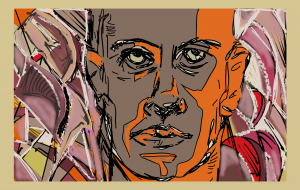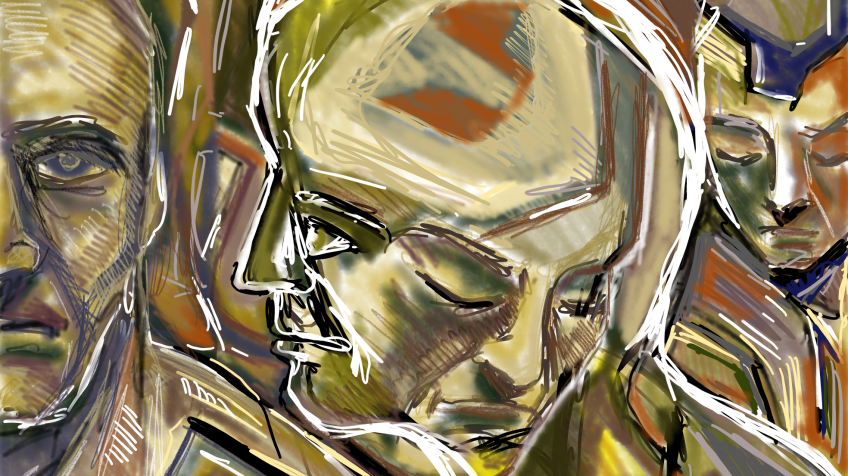The art of the artificial, digital mediums influences on the creative process and production.
Recently I began to explore the use of digital mediums in my art making process. Part of the reason was to better understand the technology and how best to serve students whom seem to be using it as their primary approach to art production. I am for all intensive purposes, a traditionalist in my choice of mediums.
All two-dimensional works of art are an illusion, the pursuit of trompe l’oeil (trick of the eye) has been engrained in visual arts since the Renaissance. Having said that, then is digital works really any different, isn’t it in keeping with traditional approaches to art production?
A mastery of this technology can be very labour intensive and takes years to truly master. So many different tools and programs litter the landscape and finding the one that best suits your approach can be daunting. What I have observed in playing with digital mediums is this feeling of invincibility. No longer do I need to concern myself with the use of resources or making mistakes, I simply hit the undo button. Digital reduces the cost of exploring ideas.
With software I maintain the same approach to drawing, starting from gestural passages to construct an image, which is most often figurative in my case. From there I begin to flush out the forms to suit my intent. In my case I use a stylus and touchscreen allowing me to draw on the actual surface, which has also made it easier than drawing on a pad and looking at a screen. Personally, it feels very intuitive, its like I am drawing on paper, new advances in digital technology has made it easier to grasp key concepts for beginners. Digital is portable, no longer do I need to be in the studio, the clean up is effortless as well.
The downsides to this is in scale, I know that printing the work can be large, however the act of physically drawing is reduced to a smaller area. No longer am I using my whole arm in drawing, it is relegated to the energies of the wrist. This does not help younger people, and invariably they tend to draw small and are intimidated by pieces of paper that go beyond the 8.5 x 11 format. We learn from our mistakes and it is in the mistakes we find growth, not having piles of drawings to look back on is problematic. Digital works do not really show a progression of an idea. The need to create thumbnails and studies seem to be lost as well, which is in my mind vital for growth and stretching the possibilities of any visual idea or skill.
Another issue is in the notion of commodity, digital works don’t seem to carry the same cache, as traditional works. Perhaps it is because the medium is more in line with commercial products such as advertisements. A limited edition of prints is not the same as those from a printmaker, and this reduces the appeal as well, from a collector’s point of view.
I wonder how the everchanging technologies will affect the value of the artwork or curatorial concerns? Will we be using platforms that will be redundant in the future, making the recovery of these works impossible to retrieve? Will this technology fall to the waist side as did VHS tapes? I guess only time will tell. As a creative person it is our duty to explore all facets and mediums to art making. To learn new approaches is to demonstrate growth, being creative is a life long journey.



